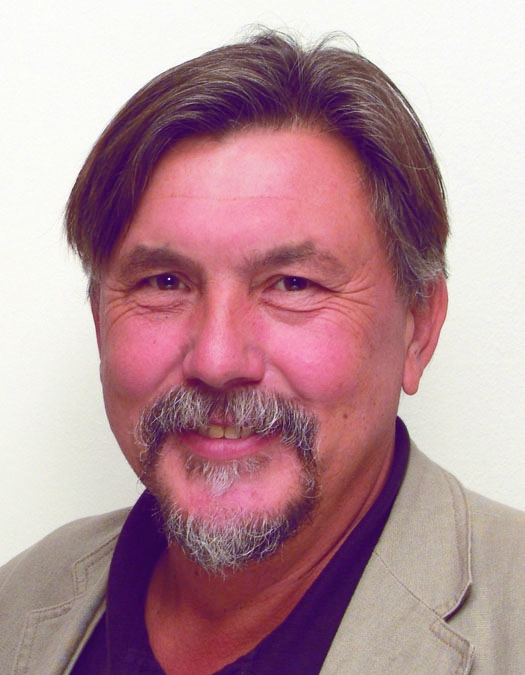 Hermann Gaub studied physics in Ulm and Münich and completed his PhD in 1984 at the Technical University of Münich. His graduate work focused on investigating scaling concepts in two-dimensional polymers. His post-doctoral research at Stanford University with Harden McConnell explored antigen presentation in the immunological synapse. As a visiting scientist with Paul Hansma at the University of California at Santa Barbara, he became familiar with Atomic Force Microscopy (AFM). Back in Münich as an Associate Professor, he pioneered the use of AFM for the study of mechanical properties of single molecules. His investigations have had a significant impact on our view of the role of mechanical forces in biology. He was the first to measure the interaction forces between individual ligand-receptor systems and to provide a detailed view of their binding potentials and unbinding forces. Having assumed the Chair for Applied Physics at the Ludwig-Maximilians University Münich (previously held by Roentgen and similar luminaries) in 1995, he invented single molecule force spectroscopy techniques and applied them to the study of biopolymers. His group was the first to explore the unique mechanical properties of single proteins. In addition to these fundamental developments, Gaub used the single molecule AFM approach to engineer the first man-made single molecule motor and to pioneer single molecule cut-and-paste technology. Hermann Gaub is co-founder and director of several institutions, among them the Center for NanoScience Münich. He has received multiple honors such as the Heisenberg Award of the Alexander von Humbolt Foundation, Leibniz-Award of the Berlin-Brandenburgische Akademie, and the Langmuir Lecture Award of the American Chemical Society. He holds an adjunct professorship at Jilin University, Changchun, China, and is a member of several institutions and academies including the Berlin-Brandenburgische Akademie der Wissenschaften, the Deutsche Akademie der Naturforscher Leopoldina, and the German National Academy.
Hermann Gaub studied physics in Ulm and Münich and completed his PhD in 1984 at the Technical University of Münich. His graduate work focused on investigating scaling concepts in two-dimensional polymers. His post-doctoral research at Stanford University with Harden McConnell explored antigen presentation in the immunological synapse. As a visiting scientist with Paul Hansma at the University of California at Santa Barbara, he became familiar with Atomic Force Microscopy (AFM). Back in Münich as an Associate Professor, he pioneered the use of AFM for the study of mechanical properties of single molecules. His investigations have had a significant impact on our view of the role of mechanical forces in biology. He was the first to measure the interaction forces between individual ligand-receptor systems and to provide a detailed view of their binding potentials and unbinding forces. Having assumed the Chair for Applied Physics at the Ludwig-Maximilians University Münich (previously held by Roentgen and similar luminaries) in 1995, he invented single molecule force spectroscopy techniques and applied them to the study of biopolymers. His group was the first to explore the unique mechanical properties of single proteins. In addition to these fundamental developments, Gaub used the single molecule AFM approach to engineer the first man-made single molecule motor and to pioneer single molecule cut-and-paste technology. Hermann Gaub is co-founder and director of several institutions, among them the Center for NanoScience Münich. He has received multiple honors such as the Heisenberg Award of the Alexander von Humbolt Foundation, Leibniz-Award of the Berlin-Brandenburgische Akademie, and the Langmuir Lecture Award of the American Chemical Society. He holds an adjunct professorship at Jilin University, Changchun, China, and is a member of several institutions and academies including the Berlin-Brandenburgische Akademie der Wissenschaften, the Deutsche Akademie der Naturforscher Leopoldina, and the German National Academy.